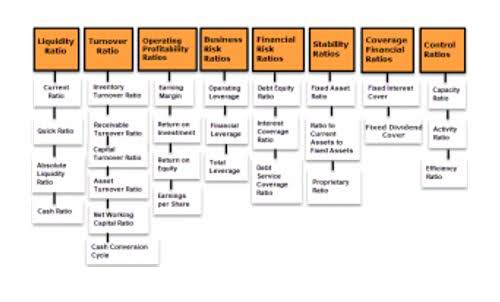What is the difference between Notes Payable and Accounts Payable?

Grasping how each works can help you make smarter decisions, manage cash flow better, and keep your accounting in order. In this guide, we’ll break down the key differences between notes payable vs notes receivable, making it easier for you to handle your company’s financial responsibilities confidently and efficiently. Notes Payable involve formal loan agreements or promissory notes, detailing the repayment terms, interest rates, and payment obligations. This contrasts with accounts payable, which may sometimes rely on less formal, verbal agreements, particularly with regular suppliers.
Example 1: Goods Purchased on Credit

A longer cycle time can lead to delayed payments and strained relationships with suppliers. On the other hand, a significant increase in accounts payable over time may indicate that you are not managing your payables effectively. It could suggest issues with vendor relationships or inefficiencies in your invoice processing system.
The Financial Modeling Certification

Suppose XYZ Company borrows $15,000 from ABC Bank on January 1st, at an annual interest rate of 8%. To help you do that, we will cover everything about notes payable in this article and how you can automate your payables for greater efficiency. Optimise supplier relationships, streamline contract management and track savings efficiently with our all-in-one procurement platform.
Repayment Terms and Interest
It is important to realize that the discount on a note payable account is a balance sheet contra liability account, as it is netted off against the note payable account to show the net liability. Notes payable are liabilities and represent amounts owed by a business to a third party. What distinguishes a note payable from other liabilities is that it is issued as a promissory notes payable vs accounts payable note.
Explore our full suite of Finance Automation capabilities
It is common for the same goods and services to be needed by these separate departments and sites. Without an established P2P process, each location may end up generating its own supply chain, which often leads to frequent errors. Aim for an interest coverage real estate cash flow ratio of 3 or higher to ensure the company can comfortably meet its debt obligations. Explore the latest best-in-class add-on technology from Sage with our new webinar series.
- This means the business would pay an additional $2,000 in interest on one $10,000 payment.
- Transforming notes payable into accounts payable is not advisable due to the long-term nature of notes payable.
- Notes Payable (NP), on the other hand, can appear as either short-term or long-term liabilities, depending on the repayment terms, and are formal loan agreements for borrowed money.
- Managing these two liabilities is crucial for businesses to maintain healthy cash flows and ensure timely payments to vendors and lenders.
- Accounts payable are always short-term liabilities, directly influencing working capital and cash flow management.
- Accounts payable are short-term debts, usually paid within a month, while notes payable have longer terms and need a written agreement.
- The account Accounts Payable is normally a current liability used to record purchases on credit from a company’s suppliers.
Principal Amount = $15,000

When it comes to cash flow, accounts payable can have both positive and negative effects. On one hand, having a higher level of accounts payable means you can delay payment and conserve cash in the short term. This can be beneficial if you need to invest in other areas of your business or cover unexpected expenses.

Apps
Notes payable are often issued with specific terms and conditions outlined in a promissory note or loan agreement. Other long-term debts may not have such specific documentation but could involve bonds or debentures instead. Also called accrued liabilities, how is sales tax calculated these expenses are realized on a company’s balance sheet and are usually current liabilities. Accrued liabilities are adjusted and recognized on the balance sheet at the end of each accounting period.
A long-term notes payable agreement helps businesses access needed capital attached to longer repayment terms (12–30 months). Notes payable is a formal, written promise that a business will pay a specific amount of money by a certain date, typically to banks, financial institutions, or corporate lenders. These are often used for larger loans or financing arrangements and typically involve interest.
- Barbara has an MBA from The University of Texas and an active CPA license.
- Leveraging financing can be an effective way of getting needed supplies and creating growth in the short term for companies that can generate revenue and adhere to repayment terms.
- A/P starts with the pre-approved purchase order or payable verification after the purchase is made.
- Reach out preemptively if you’re concerned about a payment being late and see if they’ll be willing to extend.
- Financial stability hinges on the proper handling of both accounts payable vs. notes payable.
- In contrast, APs are short-term debt obligations with less formal agreements and shorter payment terms.
- Accounts payable represents short-term debts owed to vendors or suppliers, while notes payable are formal agreements with specific repayment terms.
- Accounts payable (AP) refers to a company’s short-term obligations to suppliers and vendors for goods and services received on credit.
- You know how you’d want one of your clients to handle a late payment, so give the same treatment to your suppliers.
- In accounting, it is recorded as a liability, either short-term or long-term, depending on when it’s due.
Notes Payable, on the other hand, usually involves fewer transactions and more uniform terms, making it simpler to manage. Efficient AP management ensures a company can meet its financial obligations on time, avoid penalties, and negotiate more favorable terms in the future. Being due in less than one year, this note payable qualifies as a current liability and will be accordingly reported on the liability side of the Metro Inc’s balance sheet. AP automation software helps growing organizations get a handle on an often messy and stressful accounts payable process. Manually inputting data from each invoice leaves a lot of room for error, some that can be caught and corrected, and some that are far more difficult to go back and fix. Automation software eliminates the need for manually inputting invoices during the P2P process, increases data transparency, makes auditing easier, and even adds a layer of fraud protection.
